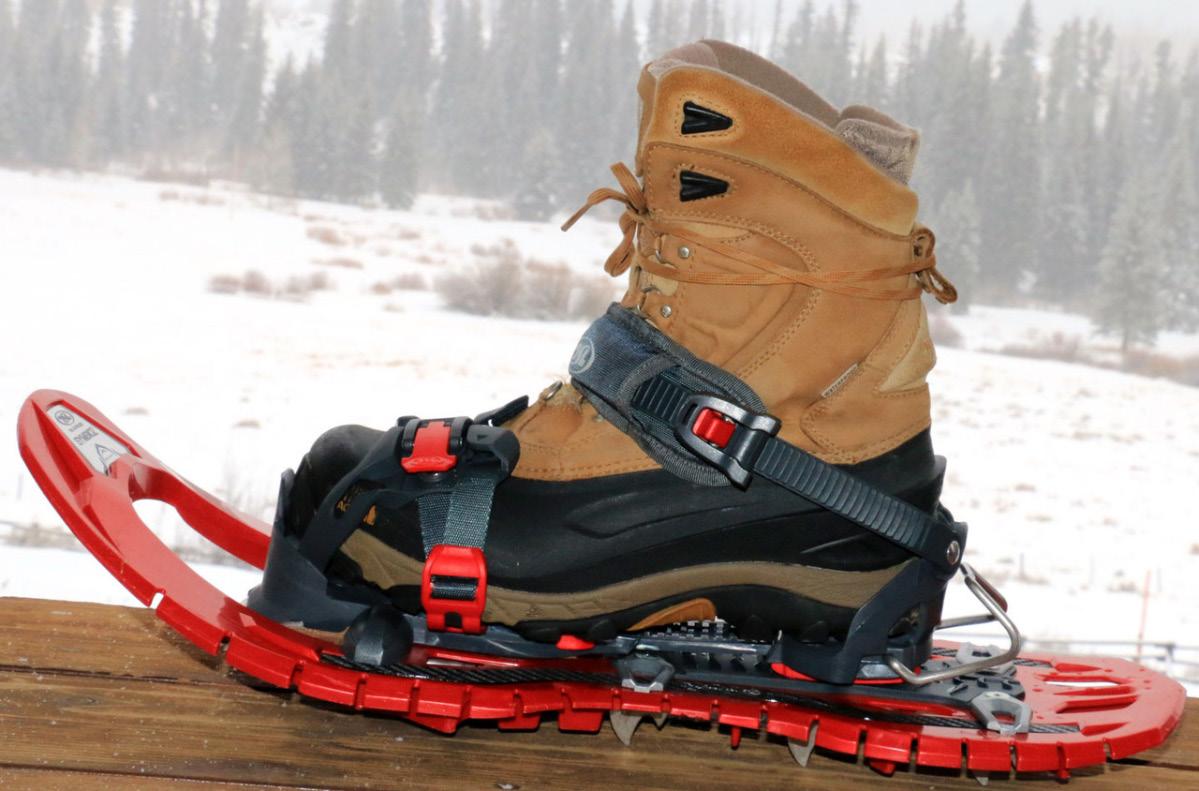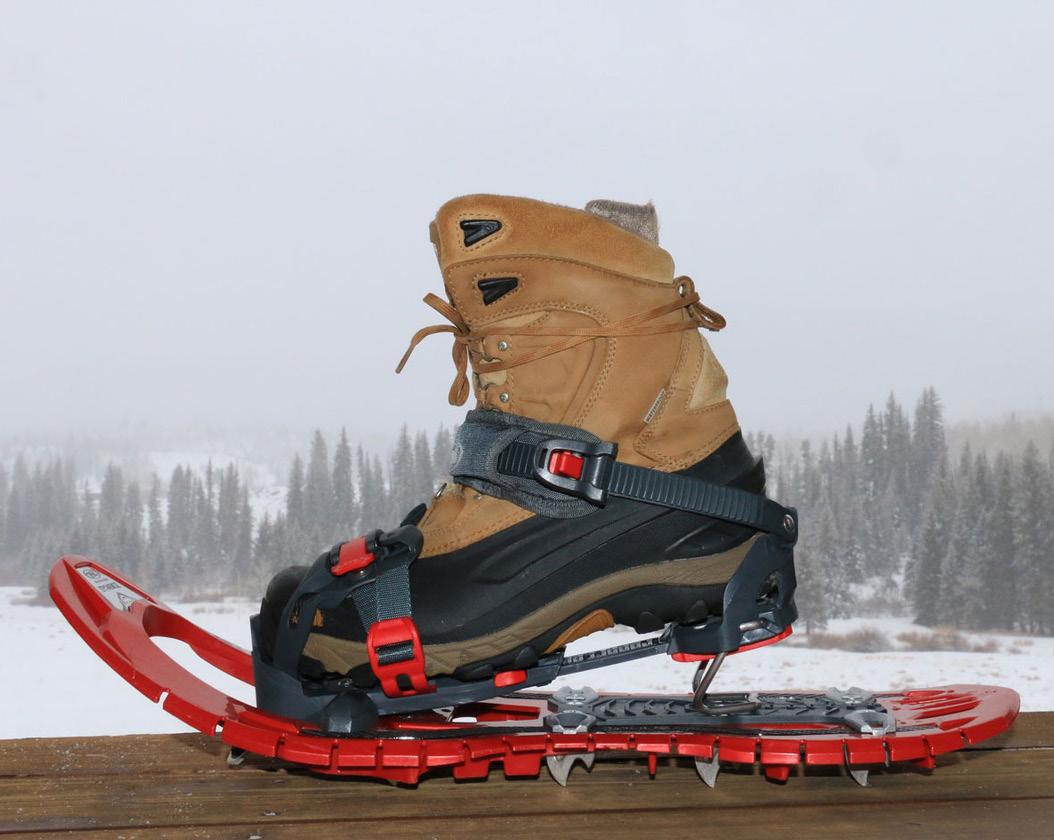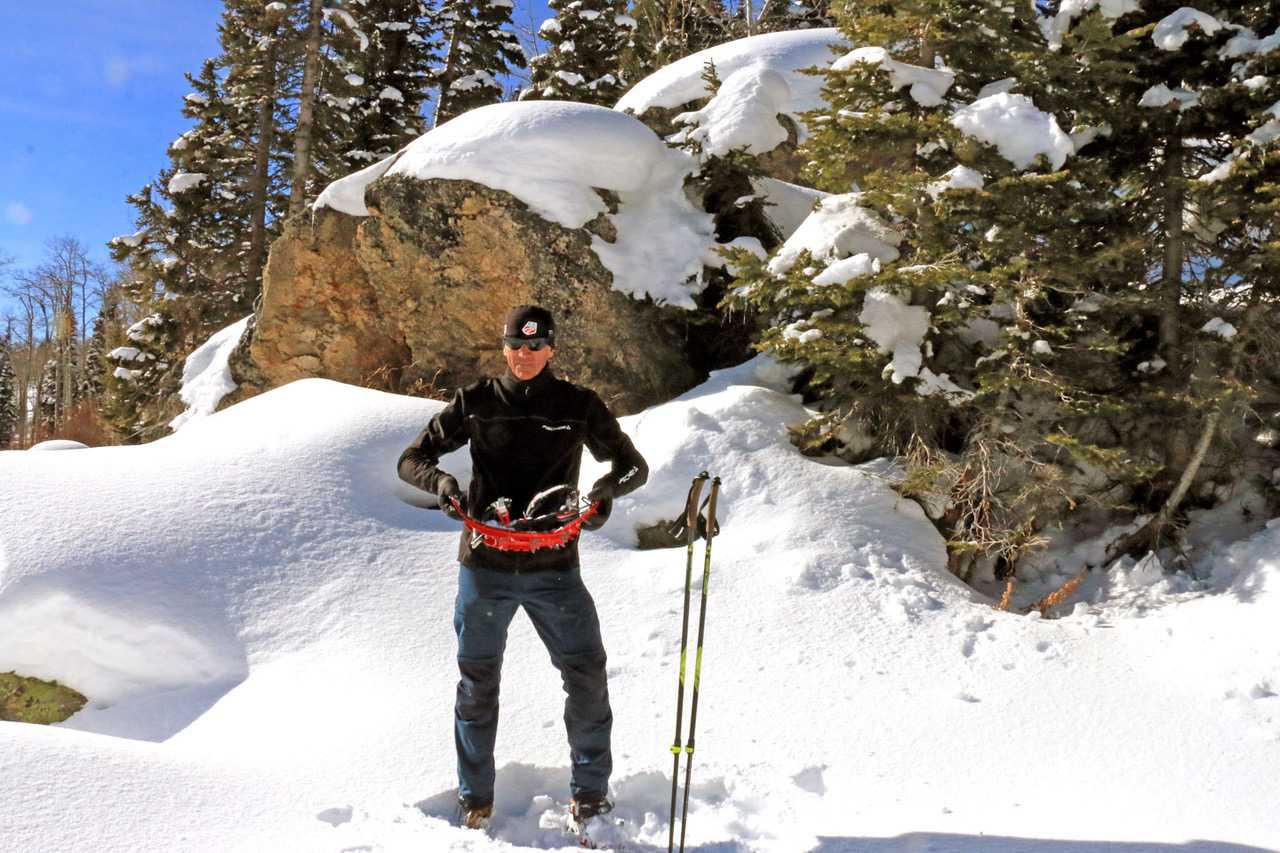
3 minute read
Putting your best foot forward, a TSL snowshoe review
by Murray Selleck
It always surprises me to find outdoor companies that successfully create new designs on very established products. The successful improvements are not made just for the sake of change (which is never a good reason); they are made to enhance performance and user enjoyment (always the right reasons).
Advertisement
TSL is the latest company that has come up with fantastic improvements on a very old product: snowshoes.
From snowshoe frames that allow you to stride naturally to a climbing bar that is always in the correct position, TSL is a worthy company deserving your consideration.
My favorite snowshoes from TSL are their series of Symbioz models. Here is where you find the most significant advancements.

TCL Sybioz Original, Elite (pictured), and Adjust models allow you to snowshoe with a very natural heel-to-toe stride.
Photo by Murray Selleck
The Symbioz Original, Elite and Adjust models allow you to snowshoe with a very natural heel-to-toe stride. The snowshoe frame flexes significantly. This is a unique feeling for snowshoers. With a traditional metal snowshoe frame we are stuck doing our best impression of a Mississippi mud walk, clomping and stomping along our way. This is not so with the Symbioz snowshoes.
One of the most brilliant design improvements is with the climbing bar underneath your heel. The binding has a sliding platform for precise boot-sole sizing. As you adjust the binding length, the attached climbing bar also moves to the perfect posion no matter what size boot is placed in the binding.
The climbing bar itself is not a new idea. They have been on snowshoes for years. Traditionally, with a fixed posion, the climbing bar for people with small boots may barely be able to weight the bar. Folks with large feet may have the climbing bar hit almost under the arch of their boot. These two possibilies are eliminated with TSL's design.

One of the most brilliant design improvements is with the climbing bar underneath your heel. The binding has a sliding platform for precise boot-sole sizing.
Photo by Murray Selleck
Further design improvements include a binding that also adjusts for width. Under the ball of your foot are two side adjustments that easily accommodate narrow or wide boots.
There's more: another improvement is eliminating the traditional heel strap which may be tough for many users to place in the right position on their boot or if it is not tight enough, may come loose.
TSL uses a strap that attaches from the heel cup and loops to the front of your boot top. Having this retention strap in the front is easier to adjust correctly and easier to take off at the end of your hike.
The hourglass shape of the Symbioz snowshoe deck also allows for easy forward steps. You won't be clicking the sides of your snowshoes with each step. TSL doesn't designate women's or men's models rather they come in three sizes: small, medium and large. These three deck sizes allow you to choose the perfect size for your use.
TSL does publish a weight range for each size, however the weight ranges are huge. To select the right size snowshoe, think about the snowpack you will be in most often. Packed trails? Small and medium work great. Breaking trail in deep fresh snow? Choose a larger frame. A bit of both? Go with the medium.

The TSL Symbioz snowshoe model is flexible.
Photo by Murray Selleck
TSL also makes the Highlander series of snowshoes that has a rigid frame on each side. While this will enhance traction, especially while traversing a side slope, the Highlanders don't offer the smooth flex of the Symbioz models.
A couple side notes:
- The TSL model tested and shown is the Symbioz Elite.
- The flexible frame is most noceable on packed trails and descents. If you're breaking a fresh trail, you'll be lifting your snowshoes up and forward into the deep snow. Not really striding heel to toe into that deep snow.
- Climbing bars let you ascend steeper hills with reduced effort. By weighng the climbing bar you engage more talons to increase tracon and the bar reduces some stress on your Achilles and calf.
- Snowshoe ettiquette says if you find a cross country skier's track in the snow make a parallel snowshoe track to the side. Be kind and don't crush the skier's track. This allows them a nice smooth ski home.
Snowshoeing in Rocky Mountain National Park is an ideal way to spend a winter's day.
The last time I snowshoed in RMNP, the infamous downsloping winds had blasted the snowpack into a surface resembling concrete. With all the stability and traction a snowshoe offers it was a really wonderful winter day. And there is no reason to make any improvements on that!

Murray Selleck moved to Colorado in 1978. In the early 80’s he split his me working winters in a ski shop in Steamboat Springs and his summers guiding on the Arkansas River. His career in the specialty outdoor industry has continued for over 30 years. Needless to say, he has witnessed decades of change in outdoor equipment and clothing. Steamboat Springs continues to be home.

https://www.snowypeakswinery.com




